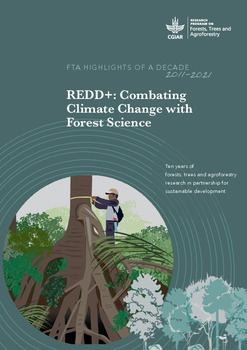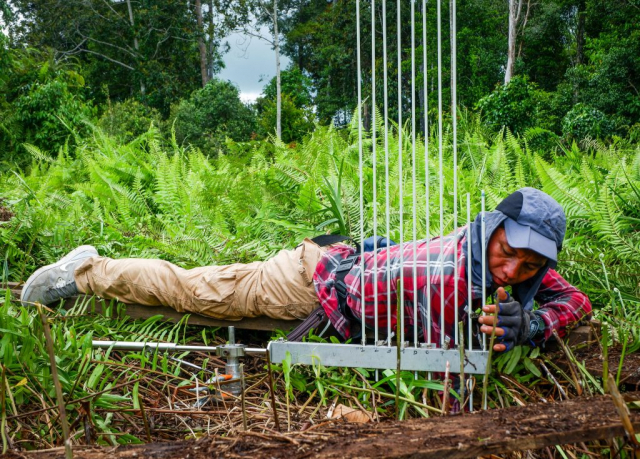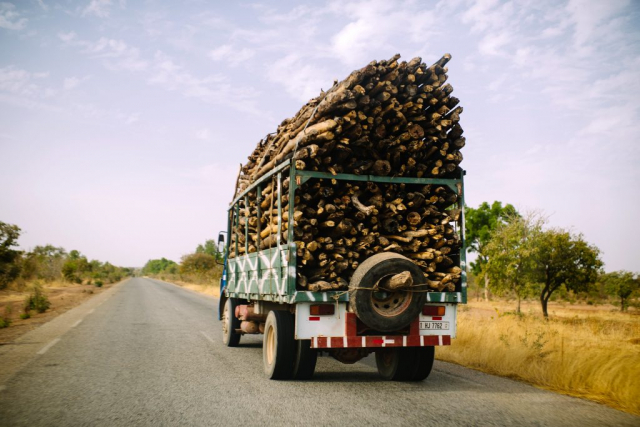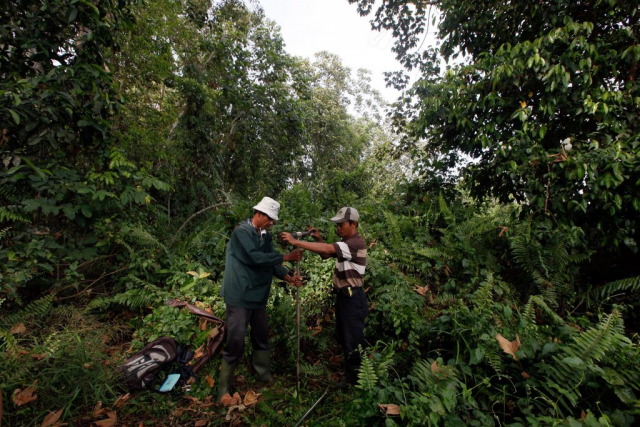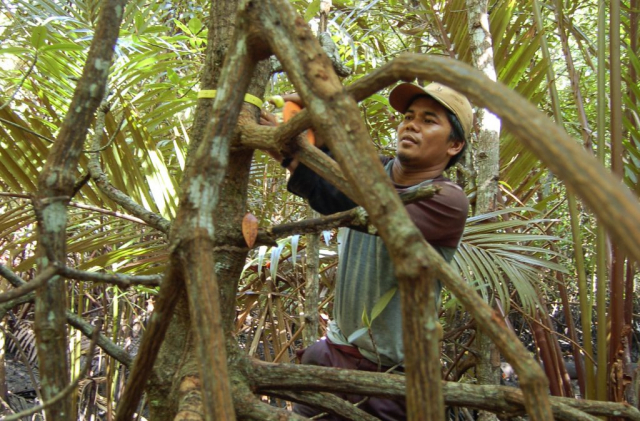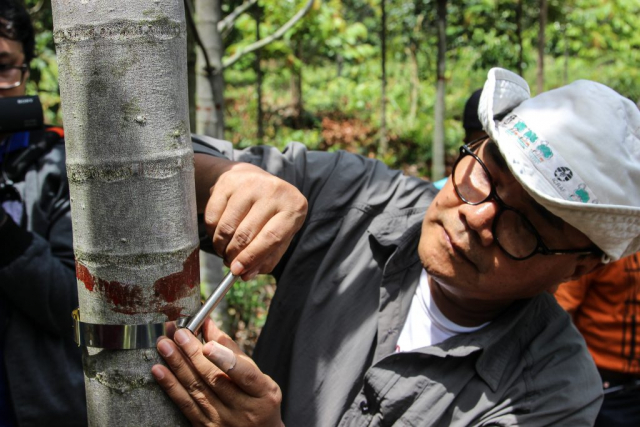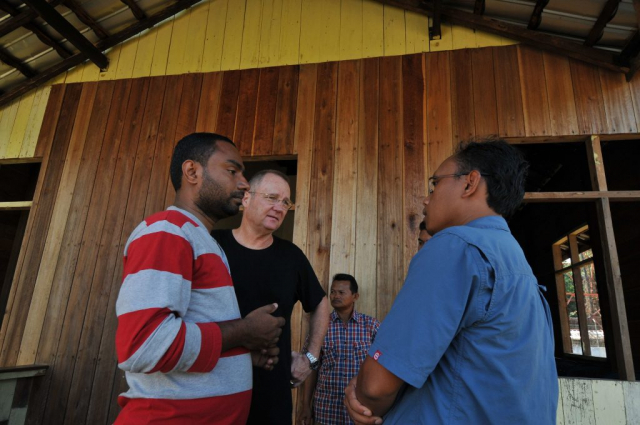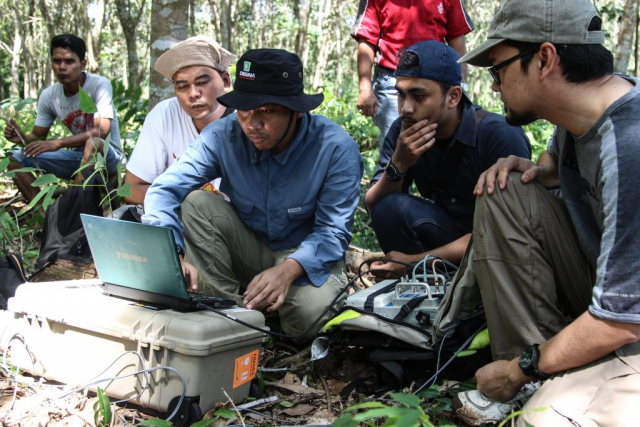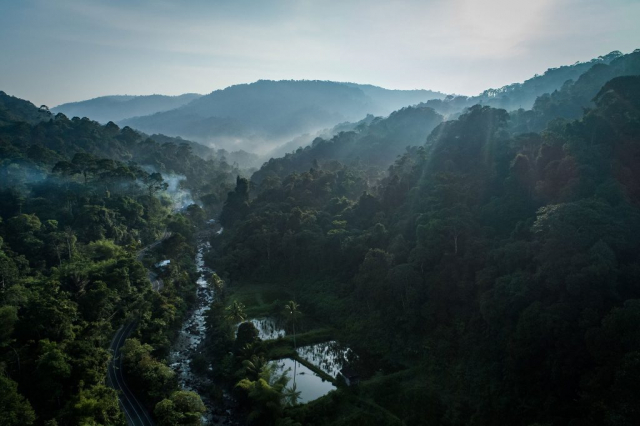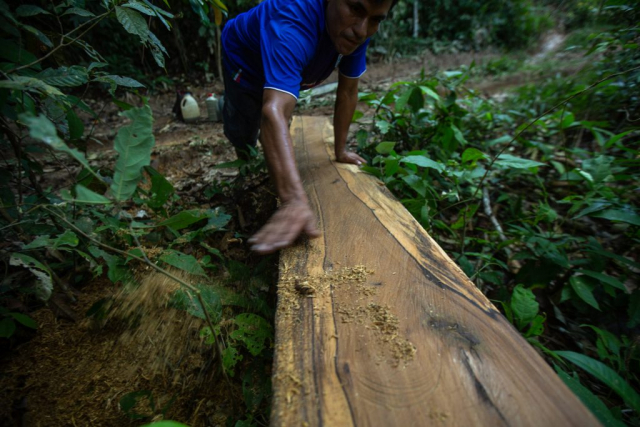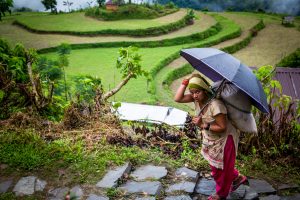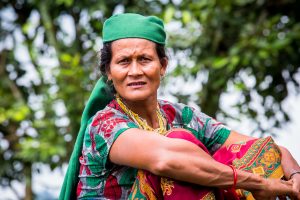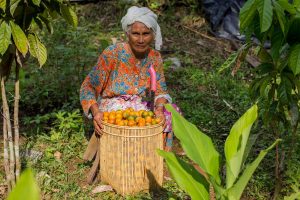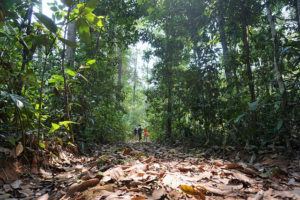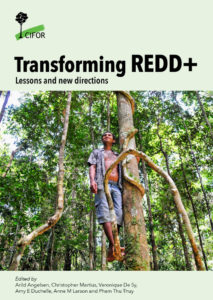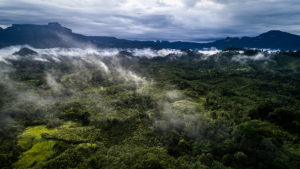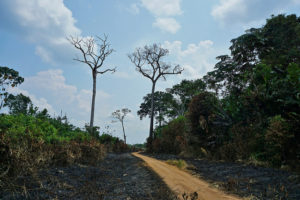Keynote speakers presented on 6 of FTA’s core work domains and how 10 years of research have translated into concrete impact
The first year of the U.N. Decade of Ecosystem Restoration also marks the completion of a 10-year cycle for the CGIAR Research Program on Forests, Trees and Agroforestry (FTA). To celebrate, FTA announced its new series, “FTA Highlights of a Decade, 2011-2021,” during a side event of GLF Climate: Forests, food, finance – Frontiers of Change. The webinar spotlighted FTA’s past achievements and underlined the critical importance of FTA’s research for the future.
“We are very pleased to present our results from the last 10 years, showing the impact that research can have,” said Robert Nasi, Co-Director General of the Center for International Forestry Research and World Agroforestry (CIFOR-ICRAF). “Our work shows that forests, trees and agroforestry can contribute to climate change mitigation and adaptation, livelihoods and biodiversity.”
Scientists at the digital event on Nov. 5 presented emblematic examples from six of the 18 volumes in the highlights series, which was officially launched the week after. FTA’s work has helped frame current agenda items as outlined in the U.N. Food Systems Summit (UNFSS), by the Convention on Biological Diversity (CBD), the International Year of Fruits and Vegetables (IYFV) and most importantly the 2021 United Nations Climate Change Conference (COP26), which was concomitant to our webinar.
The full event can be replayed here:
Now, at the close of FTA’s decadal studies, the fruits from this labour are becoming clear. Six keynote speakers opened the conference with highlights on:
- Seed genetic diversity: ICRAF senior scientist and FTA Flagship 1 Leader, Ramni Jamnadass, spoke on the importance of diverse seeds for effective tree planting projects and landscape restoration, reminding the audience that “a mighty tree starts from a seed. If you put garbage in, you get garbage out.” Such diversity is particularly important to fit the needs of smallholders and support adaptation to climate change.
Volume to be released - Trees on farms (TonF): Over the past decade, FTA engaged in numerous agroforestry initiatives to improve livelihoods and the environment. Eduardo Somarriba, the FTA focal point from CATIE, presented a relevant case from Honduras, where “living tree fences” are used to pen livestock and encourage rotational grazing. Scaling up these fences created with trees could improve the ecosystem and livelihoods for farmers who could use the trees’ resources for additional income generation while contributing to climate change mitigation.
Volume to be released - REDD+: FTA has conducted comparative research in more than 22 countries with the intent of providing evidence-based knowledge and tools for countries to better measure and monitor their greenhouse gas (GHG) emissions. These programs “allow country partners to develop efficient, equitable and effective policies and practices,” said CIFOR senior scientist and FTA-Flagship-5 Leader, Christopher Martius.
Volume 11 available here! - Value chains: Scaling up sustainable value chains and certification schemes can create new problems for smallholders if they do not have equitable access to resources, noted Bas Louman, the FTA focal point from Tropenbos International (TBI). To better understand these relationships, “we propose a systems approach linking landscapes to value chains and not looking just at landscapes or value chains,” he said.
Volume 10 available here! - Gender and social inclusion: Successful landscape initiatives must also work for women, said Marlène Elias, the FTA Gender focal point from the Alliance of Bioversity and CIAT. Over the last decade, FTA’s work has had incredible impact, proving that effective and sustainable landscape management can support social inclusion. “The innovations that we propose aim to lift the barriers in forestry and agroforestry landscapes,” said Elias, so that women, Indigenous Peoples and other minority groups have equitable access to resources, assets, income and decision-making power.
Volume 15 available here! - Forest Landscape Restoration (FLR): CIFOR senior scientist, Manuel Guariguata, acknowledged that FLR is about more than just tree planting. Rather than being a goal, FLR is a means to achieve many goals that optimize ecosystem functions along the forest transition curve. Landscape restoration also implies multistakeholder collaboration at every stage. These understandings are summarized in the six principles of FLR.
Volume 4 available here!
The introduction to the series, as well as the volumes on tree biodiversity conservation, wild meat and monitoring & evaluation are also available. More will be published in the coming weeks.
Following these interventions, the audience was asked which types of forest and tree-based innovations were most important for the future. The poll results showed that 45.7% of respondents felt more should be done to improve social inclusion (including poverty eradication) through forest and tree-based initiatives.
Next, a panel of stakeholders at the national and international level discussed how FTA’s decade of research could light the way forward. The distinguished line-up included Malanding Jaiteh, advisor to the Minister of Environment of The Gambia. “Much of what we are trying to do [in The Gambia] is to raise people’s livelihood systems by promoting the development of natural-resource-based enterprises,” said Jaiteh. He explained that the Ministry needs expert knowledge about tree diversity and seed quality to implement projects that are socioeconomically feasible and sustainable. Research from FTA scientists helps fill these gaps.
Li Yanxia, FTA-management-team member from the International Bamboo and Rattan Organization (INBAR), further highlighted three unique benefits that INBAR has received from the organization’s partnership with FTA: its unique focus on development, its capacity-building support and its platform for knowledge exchange. The Head of Embrapa Forestry, Brazil, Erich Schaitza, similarly shared how FTA facilitates his organization’s work. “FTA’s goals match very much with ours,” he said. “Working with them is a good opportunity to have our voices heard and to learn from other countries in the network.”
Natural rubber-producing countries also stand to benefit from FTA’s knowledge. “We have worked very closely with FTA since June 2020 to study how we can adapt natural rubber plantations to climate change,” said Salvatore Pinizzotto, the Secretary General for the International Rubber Study Group (IRSG).
The partnership will also be hosting its final event, “10 Years of FTA Research for People and the Planet,” on Dec. 9. Join us!
SPEAKER PRESENTATIONS
- Rober Nasi opening speech
- Effective Tree Seed Systems – Ramni Jamnadass & Lars Gaudal
- Trees on Farms (TonF) for livelihoods and the environment – Eduardo Somarriba, Arlene López-Sampson, Norvin Sepúlveda, Edwin Garcia, Fergus Sinclair
- REDD+: fighting climate change with forest science Assessing ten years of REDD+ research – Christopher Martius (CIFOR) Amy Duchelle (CIFOR, FAO)
- Gender and social inclusion – Marlène Elias
- Forest and Landscape Restoration – Manuel R. Guariguata
BROWSE ALL THE FTA HIGHLIGHTS
- Introduction: Ten Years of Forests, Trees and Agroforestry Research in Partnership for Sustainable Development
- Tree Seed and Seedling Systems for Resilience and Productivity (COMING SOON!)
- Conservation of Tree Biodiversity and Sustainable Forest Management
- Forest and Landscape Restoration
- Food Security and Nutrition
- Wild Meat
- Trees on Farms to Improve Livelihoods and the Environment (COMING SOON!)
- Biomass, Bioenergy and Biomaterials (COMING SOON!)
- Improving Rural Livelihoods Through Supporting Local Innovation at Scale (COMING SOON!)
- Sustainable Value Chains, Finance and Investment in Forestry and Tree Commodities
- REDD+: Combating Climate Change with Forest Science
- Adaptation to Climate Change, with Forests, Trees and Agroforestry (COMING SOON!)
- Multi-Functional Landscapes for Sustainable Development (COMING SOON!)
- Governing Forests, Trees and Agroforestry Landscapes for Delivering on the SDGs (COMING SOON!)
- Advancing Gender Equality and Social Inclusion
- Capacity Development (COMING SOON!)
- Monitoring, Evaluation, Learning and Impact Assessment
- The Way Forward (COMING SOON!)
This article was written by Daniella Silva.
This article was produced by the CGIAR Research Program on Forests, Trees and Agroforestry (FTA). FTA is the world’s largest research for development program to enhance the role of forests, trees and agroforestry in sustainable development and food security and to address climate change. CIFOR leads FTA in partnership with ICRAF, the Alliance of Bioversity International and CIAT, CATIE, CIRAD, INBAR and TBI. FTA’s work is supported by the CGIAR Trust Fund.












